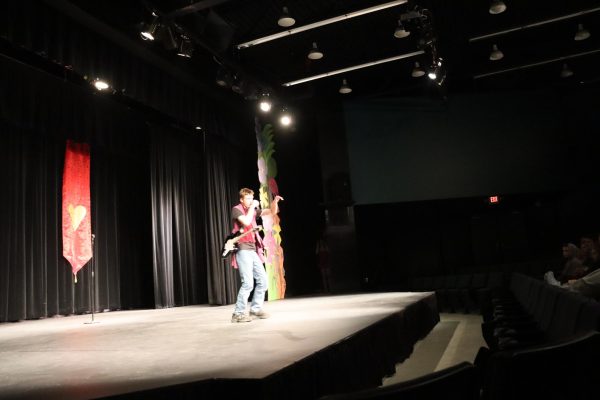Students Voice Concerns with Online Learning
December 14, 2020
As this chaotic year comes to an end, students are still attending class virtually. The temporary solution for the spring of 2020 has turned into a long-term burden, and Seward’s students are struggling to find motivation and happiness. To hear the voice of Seward High School, the student council sent out a quick survey where students could express their concerns, complaints, and challenges with remote learning.
Although the coronavirus is the cause of this dramatic change, 32.18% of students reported being only somewhat worried about its effects. Meanwhile, only 14.95% claimed to be very to extremely worried. It is evident that while Seward students are aware of the dangers of COVID, few are concerned.
However, when the question was changed to ask students’ thoughts on the effects of COVID in reference to their education, the results were very different. The majority of participants responded that they were somewhat to very worried. Despite the many changes made to the traditional classroom, students are overwhelmed with the same workload and expectations.
When asked how easy it was to work effectively, 71.26% described their attempts as somewhat to very difficult. The next question had them identify which obstacles prevented them from being successful students. With 14 options, participants were asked to narrow their answer to three choices. The top answer was “keeping a regular schedule,” with “too many distractions at home” and “workload is too overwhelming” following behind. Others reported feeling lonely, struggling to communicate with their teachers, and balancing work and school as additional factors. Students were then asked how long remote learning could be sustained, with options ranging to at least three months. The most popular answer was “it’s not sustainable now.”
Most teachers have been meeting with their classes and/or individual students once to twice a week, and the survey concluded that most students saw this as the best option. Additionally, the majority said they were confident they had the right resources and benefits from the school. They also reported being confident in the support they received from their household and peers.
Since classes seem to be meeting enough and providing all the necessary resources, why are students struggling to turn in assignments, show up to Zooms, and stay motivated?
The final survey questions provided space for students to write out their answers. These questions asked what teachers could do to make remote learning a better experience and if students wanted to share any comments or concerns. A long list of responses expressed all the issues students are having with remote learning. From mental health concerns to confusion with Canvas, everyone is stressed and overwhelmed.
Unfortunately, it seems that students are blaming themselves; citing a lack of motivation, inability to focus, and an inconsistent schedule as problems they are responsible for. In reality, the stress of a pandemic, the disconnect of an online world, and irregular schedules have created a disorderly environment incapable of supporting its students.
In their answers, students are asking for help. It is clear that the temporary solution of online learning is not one that can survive much longer. Even the most COVID-cautious of the bunch are begging to return to in-person school, if only to see human faces again.
As COVID grows worse, the obvious solution seems to be to remain inside and continue remote learning. However, this has become a danger in itself. Students are losing hope as the loneliness and stress of the pandemic become an endless struggle. Students are watching their mental health decline and their grades drop with it. Whether school is in person, a mix of remote learning, or switched to students attending on alternate days, Seward High School is desperate for a change.









